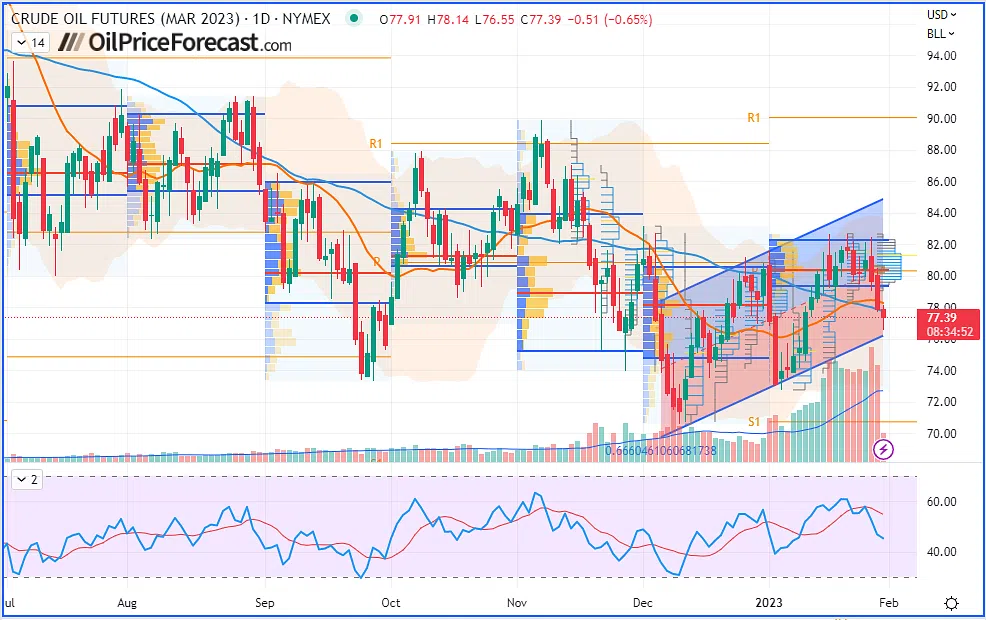Crude Oil Is Now Moving Below Its Quarterly Pivot Point
Black gold benchmarks continued their decline on Tuesday, having lost more than 2%!
Indeed, the oil market was weighted by resilient Russian exports as investors deserted risky assets ahead of a series of monetary policy decisions by major central banks.
Both the US and EU Central Bank meetings are taking place on this 'Super Thursday' as financial markets expect a 25-bp rate hike by the Fed and 50 basis points for the Eurozone.
The level of potential support zone that I was suggesting last Friday (located around $80.20-80.60 for the West Texas Intermediate), encompassing both its quarterly pivot and volume point of control, did not take much time to be broken:

Therefore, the price action invalidated my scenario of a possible rebound onto that level that could have propelled oil prices to close the month of January on a higher node eventually.
Instead of that, it is now more likely that the March futures contract should close below those pivot/vpoc levels as it is currently trading below its monthly value area:
 For a more detailed explanation of those concepts (High Volume Nodes, VPoC, Value Area, etc.), I invite you to read this short tutorial by TradingView.
For a more detailed explanation of those concepts (High Volume Nodes, VPoC, Value Area, etc.), I invite you to read this short tutorial by TradingView.
On the daily chart, a rebound could let crude oil prices come back around the median of the recent regression channel, which is currently where I see a point of equilibrium between bears and bulls:

On the other hand, the drop in crude oil is also to be put in perspective of a US Dollar Index that made a rebound this week, evolving now towards the upper end of its regression channel:

Fundamentally, the signs of strength in Russian exports and lingering fears of a global economic slowdown have spooked investors.
Russian oil exports rebounded significantly in the first half of January compared to December, the first month of the entry into force of the EU oil embargo and the cap on the price of Russian crude by the G7, according to this report published by Energy Intelligence Group.
In addition, new Western sanctions should come into effect on February 5.
The EU embargo will thus extend to the purchase of Russian petroleum products, such as gasoline or fuel oil, and the G7 has also planned to cap the price of these products.
And finally, not to forget that the OPEC+ will hold its Joint Ministerial Monitoring Committee (JMMC) on Wednesday to discuss current market conditions.
Post Scriptum: I am planning to write a series of articles more focused on the geopolitical situation. Would that be a topic you would be interested in? If so, let me know in the comments. Thanks!
Sebastien Bischeri,
Oil & Gas Trading Strategist